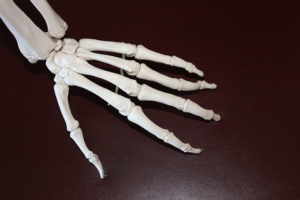What Are the 5 Types of Psoriatic Arthritis? – Greatist
Psoriatic arthritis (PsA) is related to psoriasis, but they’re not the same thing. Psoriasis is a chronic skin condition that causes red, scaling skin. PsA, on the other hand, typically shows up as joint pain. It’s possible to have both conditions, or to have one without the other.
If y…….

Psoriatic arthritis (PsA) is related to psoriasis, but they’re not the same thing. Psoriasis is a chronic skin condition that causes red, scaling skin. PsA, on the other hand, typically shows up as joint pain. It’s possible to have both conditions, or to have one without the other.
If you’re dealing with PsA, it’s helpful to know what kind you have so you can get the right treatment. Here’s how to recognize the five main types of PsA and treatment tips for each.
Asymmetric PsA is the most common type of PsA. It accounts for at least 60 percent of cases. It affects your joints individually rather than in pairs. That means you could experience pain in the joints of your right hand without your left being affected.
But your symptoms won’t necessarily only stick to one side. For example, your left knee and right foot might have symptoms at the same time, even if you’re experiencing asymmetric PsA. According to a 2019 study, this type of PsA is more common in men.
How to spot it
Common symptoms of asymmetric PsA include:
How it’s treated
PsA doesn’t currently have a cure. But there are some ways to show your symptoms who’s boss. Your doctor can help you figure out which one (or combination or treatments) is right for you.
Potential treatments include:
- physical therapy
- occupational therapy
- oral corticosteroids (like prednisone)
- biologic drugs (like adalimumab or etanercept)
- nonsteroidal anti-inflammatory drugs (NSAIDS) like aspirin or ibuprofen
- intra-articular joint injections (like hyaluronic acid or cortisone)
With symmetric PsA, symptoms tend to pop up on both sides of your body at the same time. This type of PsA represents 15 to 61 percent of cases. It’s more common in women.
How to spot it
Symmetric PsA symptoms are a lot like asymmetric PsA symptoms. Symmetric PsA tends to affect the smaller joints of the feet or hands, though, rather than larger joints like your knees or elbows.
FYI: Symmetrical PsA is sometimes confused with rheumatoid arthritis (RA). A simple blood test can help you know if you’re dealing with RA instead.
How it’s treated
The treatments for symmetric PsA are often similar to asymmetric PsA. The ideal exact treatment plan can depend on your:
- age
- weight
- mobility
- pain level
- overall health
PsA PSA: Studies show that smoking cigarettes can make PsA symptoms worse. It might reduce some of the positive results from treatment, too.
<span …….
Source: https://greatist.com/psoriatic-arthritis/what-are-the-5-types-of-psoriatic-arthritis







